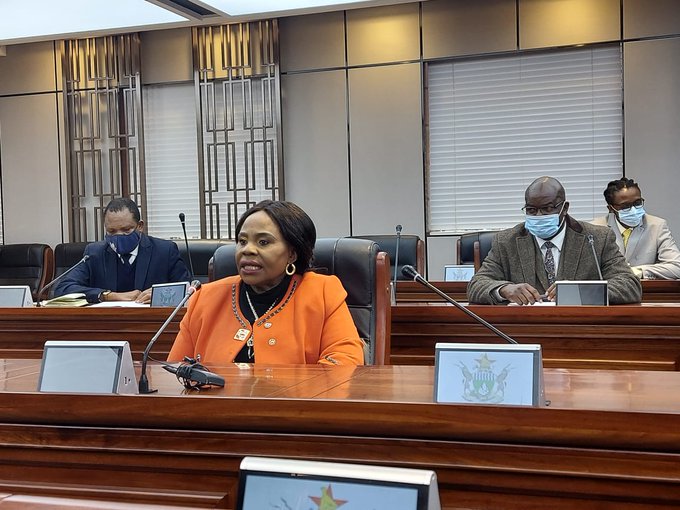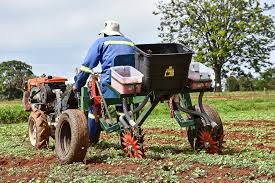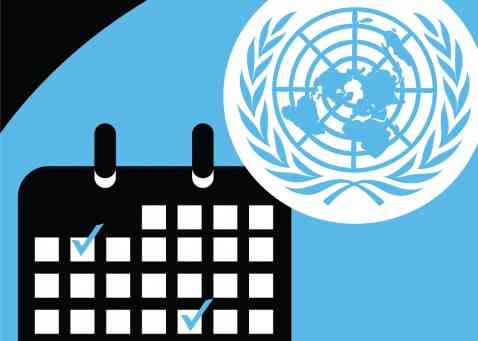
- ZIMBABWE’S RESPONSE TO THE COVID-19 PANDEMIC, AND REPORT ON THE PROCUREMENT AND ROLLOUT OF VACCINES
Cabinet received an update on the Country‘s Response to the Covid-19 Pandemic and a Report on the Procurement and Roll-Out of Vaccines, as presented by the Chairman of the Ministers’ COVID-19 National Committee, Vice President and Minister of Health and Child Care, Honourable General (Rtd.) Dr. C.G.D.N. Chiwenga.
The nation is advised that, as at 27th June 2022, the country’s cumulative COVID-19 cases stood at 255 383 and 248 317 recoveries.The recovery rate was 97%, with 1 517 active cases having been reported.The number of new COVID-19 cases continued to decrease, with 552 cases having been recorded, compared to the 676 recorded the previous week, marking an 18% decline. An average of 79 new cases was recorded per day, compared to 97 new cases the previous week.Furthermore, a total of 22 COVID-19-related new admissions were recorded during the week, compared to 34 the previous week. No patients were admitted to the intensive care unit.This indicates that the COVID-19 pandemic remains under control, as it has been for some months now.
Regarding the national vaccination programme, Cabinet wishes to inform the nation that, as at 27th June 2022, a total of 6 280 106 first doses of the COVID-19 vaccine had been administered, while 4 623 957 people had received their second dose, and 869 862 their third dose.This translates to a national coverage of 55.9%, compared to the 55.8% recorded the previous week.
The public is advised that in view of the World Health Organisation (WHO)’s weekly report indicating that there was a large increase in new cases globally during the week under review, the country should remain vigilant, test more, vaccinate more and prioritise those with underlying chronic medical conditions.Cabinet therefore, calls upon all citizens that have not been vaccinated to present themselves for vaccination at centres nearest to them.
#PostCabinetBriefing There are no cases of monkeypox reported in Zimbabwe. The country has however, put surveillance, laboratory testing and case management measures in place in preparation for any potential outbreak. pic.twitter.com/Q9m5SCuvAz
— Ministry of Information, Publicity & Broadcasting (@InfoMinZW) June 28, 2022
The nation is informed that Cabinet also received a report on the global monkeypox outbreak that has so far been detected in 42 countries.Cabinet wishes to inform the public that there are no cases of monkeypox reported in Zimbabwe. The country has, however, put surveillance, laboratory testing and case management measures in place in preparation for any potential outbreak.The public is urged to put emphasis on implementation of Public Health and Social Measures that are currently being used for COVID-19 such as regular washing of hands and social distancing, since these measures have been proven to also work for monkeypox.
- Chamisa under fire over US$120K donation
- Mavhunga puts DeMbare into Chibuku quarterfinals
- Pension funds bet on Cabora Bassa oilfields
- Councils defy govt fire tender directive
Keep Reading
Cabinet wishes to warn the public that the COVID-19 pandemic is not over yet. In view of the global outbreak of monkeypox, Cabinet has approved the following measures:
(a) Zimbabwe should remain vigilant and strengthen COVID-19 testing at all levels;
(b) Provinces should come up with innovative strategies to increase vaccination coverage and focus on the elderly and those with underlying chronic health conditions;
(c) Implementation of all COVID-19 public health and social measures must be continued;
(d) Our country must take advantage of lessons learnt from the COVID-19 response and mount a strong monkeypox preparedness and response strategy; and
(e) The Risk Communication Sub-Committee must immediately embark on a monkeypox information dissemination exercise.
2.0 UPDATE ON THE 2022/2023 CEREAL MARKETING SEASON AND 2022 WINTER WHEAT PRODUCTION
Cabinet received an Update on the 2022/2023 Cereal Marketing Season and 2022 Winter Wheat Production as presented by the Minister of Lands, Agriculture, Fisheries, Water and Rural Development, Honourable Dr Anxious Jongwe Masuka.
The nation is informed that the grain marketing season commenced on 1st April 2022, with substantial stocks carried over from the previous season. Government is committed to pay farmers on time. The grain intake as at 22 June, 2022 was 20 626 metric tonnes (MT). The value of the grain delivered so far is ZW$ 1.8 Billion and USD2.12 million with ZW$748 million and US$2 million having already been paid to the farmers.
The nation is further informed that it is anticipated that deliveries will peak around July to September, before declining in November. The grain Millers have concluded import contracts of 400 000 MT from Malawi and Zambia. It has been indicated that Social Welfare will require 30 000 MT every month.
Regarding the 2022 Winter Wheat Production, the nation is informed that the target was to plant 75 000 hectares and produce 383 000 MT, which will be sufficient to meet the country’s needs. Despite challenges with the late start of commencement of the winter season due to a delayed summer rainfall season, the area planted to date is 100% of the target.
#postcabinetbriefing Cabinet informs the nation that there are enough fertilisers and chemicals to support winter wheat production. 100 megawatts have been ring-fenced for farmers and are exempt from load shedding. In addition, 750 000 litres of fuel have been availed. pic.twitter.com/T6MIibA2Tp
— Ministry of Information, Publicity & Broadcasting (@InfoMinZW) June 28, 2022
Cabinet wishes to inform the nation that there are enough fertilizers and chemicals to support winter wheat production. Some 100 megawatts of electricity have been ring-fenced for farmers and are exempt from load shedding, while Petro Trade availed 750 000 litres of fuel to be distributed through the Agricultural Marketing Authority (AMA). Adequate measures have also been put in place to control quelea birds.
Pertaining to tobacco marketing, a total of 152 million kg valued at US$456.47 million has been sold to date. The average price at the Auction is US$3.19/kg, compared to US$2.81/kg in 2021.Tobacco merchants have exported 75 300 000 kg of tobacco valued at US$359 934 000, compared to 65 500 000 kg valued at US$258 725 000 exported during the same period the previous year. The target volume for the 2022/23 season is 275 million kg from 135 000 hectares, with 96% of the production being under contract.
The cotton marketing season commenced on 13th June 2022, with five contractors having been issued with buyers’ licences. The seed cotton intake as at 23 June 2023 stood at 22 349 202 kg, with the new cotton price having been generally welcomed by farmers.
3.0 ZIMBABWE VULNERABILITY ASSESSMENT COMMITTEE 2022 RURAL LIVELIHOODS ASSESSMENT REPORT
Cabinet received and adopted the Zimbabwe Vulnerability Assessment Committee 2022 Rural Livelihoods Assessment Report, as presented by the Minister of Lands, Agriculture, Fisheries, Water and Rural Development.
The 2022 Rural Livelihoods Assessment collected and analysed information in the following thematic areas: Education; Social Protection; Agriculture Production; Livestock; Irrigation Infrastructure; Household Income; Child Nutrition; Water, Sanitation and Hygiene (WASH); Loans; Household Consumption Patterns; Food Security; Youth; Development Issues; and Shocks and Challenges.
As the public will be aware, the 2021/2022 rain season started late in most parts of the country, and the season was characterised by poor rainfall distribution in terms of both space and time across the country. The agro-based nature of Zimbabwe’s rural livelihoods, coupled with climate related shocks pre-disposes the country’s rural households to food availability, access and stability challenges. The rainfall season also affected livelihoods strategies which include seasonal on-farm labour, livestock sales, vegetable production and sales, harvesting, and the sale and consumption of wild produce.
Cabinet wishes to highlight that the Assessment Report notes that Government came up with a number of mitigatory measures targeted at ameliorating and uplifting the livelihoods of the rural populace during the depressed period. Some of the measures are as follows: 1. Government launched the COVID-19 Vaccination Campaign to safeguard citizens from the pandemic;
2. The vulnerable and disadvantaged groups were supported through food aid and food subsidies; harmonised cash transfers; assisted medical treatment orders; and the removal of restrictions on food importation, such as removal of import duty on maize and wheat, cooking oil, among other basic commodities, to ensure affordability of essential foodstuffs and to mitigate the effects of the drought;
3. The Pfumvudza/Intwasa Programme assisted farmers with seed, fertiliser and herbicides, and thereby ensuring food self-sufficiency at household level; and
4. Government also initiated the Emergency Road Rehabilitation Programme in February 2021, which aims to improve roads, which were extensively damaged during the rainy season, and to harness the potential of the transport system in promoting economic growth.
In education, 83.8% of school-going children were in school compared to the 77% recorded in 2021. Government assisted 560 000 learners through the Basic Education Assistance Module (BEAM), and reiterates its standing policy that no learner should be turned away for non-payment of school fees. Pertaining to early marriages, Government will robustly monitor the legislation under the Marriages Act, while incorporating the local leadership in educational, publicity and awareness programmes in communities.
#postcabinetbriefing The Zimbabwe Vulnerability Assessment Committee 2022 Rural Livelihoods Assessment Report was adopted. Report reveals that Government assisted 560 000 learners through the BEAM. Govt reiterates that no learner should be turned away for non payment of fees. pic.twitter.com/tVzE5sbw7D
— Ministry of Information, Publicity & Broadcasting (@InfoMinZW) June 28, 2022
Highlights of the other Rural Assessment findings are as follows:
(i) Under social protection, 61% of rural households received some form of support, with Government accounting for 67% of the support rendered;
(ii) Regarding water and sanitation, the Assessment revealed that 78% of the communities had access to improved water sources. Government’s WASH interventions, which have resulted in the relatively improved indicators, include the following:
- the Integrated Rural Water Supply and Sanitation Programme (IRWSSP);
- the Presidential Rural Development Programme; WASH in Schools;
- Demand-led Sanitation and Hygiene Programme;
- Climate Adaptation and Energy Project; and
- the Enhanced Resilience of Vulnerable Households in Zimbabwe;
(iii) The household food security situation improved, with the proportion of households having borderline diets having decreased while households having poor food consumption increased to 36%. The proportion of households in the acceptable category also increased from 29% in 2021 to 35% in 2022. Government has instituted programmes to address the country’s dietary situation, notably the Agriculture and Food Systems Strategy, which has, as one of its components, the establishment of a village and agribusiness hub garden;
(iv) On the youth, the ZimVAC Assessment highlights, among other major challenges faced, the problem of drug and substance abuse. Government has put in place an Inter-Ministerial Committee on Substance Abuse chaired by the Ministry of Public Service, Labour and Social Welfare to address substance abuse problems. Government has also set up 5 Centres for the rehabilitation of youths affected by substance abuse, with a total of 600 substance abusers having gone through the centres. To address employment challenges, Government is implementing various job creation initiatives, including the provision of skills and entrepreneurship training for income generation projects by Vocational Training Centres and through Integrated Skills Outreach Programmes (ISOPs).
#postcabinetbriefing Government has set up 5 rehabilitation centres for youths affected by substance abuse. 600 substance abusers have gone through the centres to date. Govt is also implementing various job creation initiatives including skills and entrepreneurship training. pic.twitter.com/IQvVX3gjyv
— Ministry of Information, Publicity & Broadcasting (@InfoMinZW) June 28, 2022
(v) Regarding irrigation development, the assessment revealed that of the 394 irrigation schemes reported to have been established in the sampled districts, 51% were fully functional, with 28% partly functional and 21% not functional. Government is implementing various programmes to rehabilitate irrigation schemes.These include the National Accelerated Rehabilitation and Development Programme targeting the rehabilitation and development of at least 200 hectares in every district annually over a ten-year period. To date, 216 000 hectares including plantations are under irrigation of which 116 000 hectares are for cropping. The Government intends to increase the hectarage for cropping from 116 000 hectares to 350 000 hectares.
The 2022 Rural Livelihoods Assessment will be published for use by stakeholders and the public at large.
I THANK YOU!











